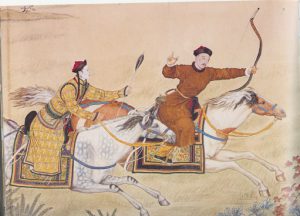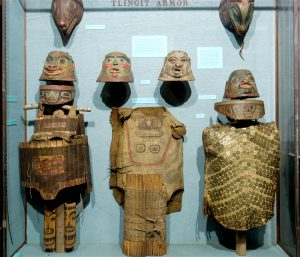Headlines about smoggy skies in Beijing regularly draw attention to China’s current environmental crisis. Observers rightly associate some of these problems with the rapid economic development of recent decades. Yet they ought to look back to the late nineteenth century for clues about the origins of China’s industrialisation and its modern environmental predicament.
Chinese people living under the rule of the Qing dynasty (1644-1911) also faced a variety of environmental problems. Rapid population growth in the preceding centuries led to land shortages and the depletion of natural resources of all kinds, from wildlife to biomass fuels. Deforestation and soil erosion exacerbated flooding and gradually undermined the ecological resilience of agricultural systems in the country’s major river valleys.
The political and financial weakness of the Qing state made matters worse. Internal rebellions and the repeated onslaught of foreign imperialism diminished the power of the imperial court in Beijing and forced provincial officials to choose how best to allocate limited tax revenues. Heavy military spending left relatively little money to deal with major ecological crises. In 1855, the Yellow River overflowed its banks in Henan and switched course, causing devastating flooding. From 1876 to 1879, drought in northern China led to a famine that killed millions.
Yet the story of nineteenth-century China is not merely one of inevitable political decline and environmental crisis. It was in this era that Chinese leaders began to lay some of the foundations for energy-intensive industrial development.
China’s early industrialisation
Starting in earnest in the 1860s, Qing statesmen acquired new tools from beyond China’s borders to increase the country’s power. Foremost among these tools was foreign military hardware. Officials purchased munitions manufactured overseas and set up arsenals and shipyards to build the guns and oceangoing vessels considered necessary to help Qing forces defeat their internal and external adversaries.
But Qing statesmen also looked to other measures to increase China’s wealth and power. Some began to question the country’s use of natural resources. In the early 1860s, one leader of the era’s growing reform movement, Feng Guifen, noted that foreigners were more adept at fully exploiting the resources of the land (地力) such as agricultural products and minerals. He implied that Qing officials could enrich and empower China by making better use of the country’s natural resources.
Qing statesmen began to establish ventures in transport, industry, and commerce. They acquired new machines powered by steam. Steam engines revolutionised transportation, and China’s first steamships and railroads were built.
This laid bare growing tensions between foreign industrialists and local interests. The first railway in China was built by the British near Shanghai in 1876 and operated until 1877, when it was destroyed by the Qing governor-general. Railroads were a hotly contested matter, and there was vocal opposition to them among some scholars. But reform-minded Qing officials accepted that they were necessary tools of development. Qing officials in various parts of the country had constructed (with foreign engineering expertise) over 300 miles of track by 1894.
Chinese elites purchased and operated other machines for everything from the spinning and weaving of cotton and woollen threads and textiles to the pumping of water from mine shafts. They also tested machines for digging irrigation canals and water wells and for ploughing agricultural fields.
As in the West, the emerging industrial infrastructure relied on energy from coal. By the late nineteenth century the location and extraction of coal to power these machines became central concerns of Qing statesmen, who saw industrialisation, and thus coal, as the means for the country’s empowerment. They cooperated and competed with foreign scientists and technicians to extract coal to fuel industrial ventures, as new research by Shellen Wu has demonstrated. Toward the end of the century, elites increasingly referred to China’s minerals, and especially its coal, as the country’s most valuable resource.
Some of these industrial ventures were difficult to sustain. Money, coal, and other material inputs were sometimes in short supply. Officials were not always prepared to fully embrace new technology. They expressed apprehension that machines would quickly exhaust national supplies of minerals. Others worried that machines would put people out of work.
Nonetheless, the idea of using machines to exploit China’s natural resources continued to resonate with younger reform-minded elites. Among them was Sun Yat-sen, who later became known for his efforts to overthrow the Qing dynasty and for his role in leading China’s Nationalist Party after 1911. In 1894, Sun proposed in a now-famous letter to leading Qing statesman Li Hongzhang that the use of machines would be necessary to tap into China’s abundant unexploited resources. Sun’s letter is also notable for its focus on electricity as a potential source of power for industrialisation.
Some historians have concluded that China’s early industrialisation was unsuccessful because it was unable to prevent the country’s loss of sovereignty to foreign empires. But for environmental historians, the most important questions may lie elsewhere.
By shifting attention to the relationship between machines, energy, natural resources, and the environment in the late nineteenth and early twentieth centuries we can resolve unanswered questions about Chinese environmental history. For example, we know little about the environmental toll of machines and coal in this era. We also have little understanding of early responses to industrial and urban pollution in China’s cities. Did urban elites and commoners embrace the environmental changes wrought by early industrialisation as signs of progress? Or did they recoil at polluted air, water, and soil? To what extent does the environmental history of China’s early industrialisation echo environmental histories of nineteenth-century industrialisation elsewhere in the world?
Of course, China did not achieve widespread industrialisation and did not become heavily reliant upon fossil fuels until later in the twentieth century. But coal-fired machines and visions of industrialised landscapes in the late nineteenth century were harbingers of things to come.
Read more from China Dialogue’s Environmental History Series








